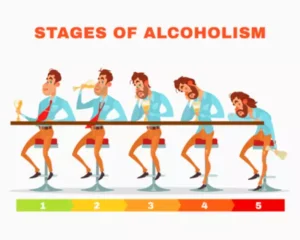Moderate Drinking Doesn’t Have Health Benefits

Research conducted using each perspective seeks slightly different information from study participants. Because different research traditions have different focuses, each tradition emphasizes different research questions, which may be hard to compare across studies. On the one hand, this diversity can be advantageous in that the four disciplines complement each other in revealing drinking patterns and problems. On the other hand, the variability also can be a handicap, because the information collected about alcohol consumption often is not comparable across studies. For example, one survey may ask questions in a way that permits a diagnosis of alcohol dependence. Another study, however, may ask questions about alcohol consumption and alcohol problems without including specific diagnostic criteria, and thus a diagnosis cannot be made.
Alcohol levels
- However, these studies were very limited, and no confirmed conclusion has been reached on the link between menstruation and alcohol absorption.
- Likewise, criteria in the ninth revision of the International Classification of Diseases (World Health Organization WHO 1977) were modified substantially in the 10th revision (WHO 1992).
- Drinking moderately if you’re otherwise healthy may be a risk you’re willing to take.
- Talk with your doctor right away if you have signs of alcohol use disorder — even if you don’t think they’re causing any problems in your life.
- However, light wines may have an alcohol content in the neighborhood of 7 percent, whereas fortified wines (which include added distilled spirits) may range up to 24 percent alcohol by volume or higher.
- Finally, distilled spirits exhibit a wide range in terms of alcohol concentration.
The HMO provides comprehensive medical, mental health, and addiction services to about 480,000 people in northwest Oregon and southwest Washington State. The demographic and health characteristics of the population in the health plan correspond closely to the characteristics of the Pacific Northwest population it serves. Talk with a doctor or nurse if you’re having a hard time cutting back on your drinking. If you keep a lot of alcohol around, you may be tempted to go over the drinking limit you set for yourself when you’re at home. Certain health problems — like depression or anxiety, sleep problems, and chronic pain — can put you at a higher risk for alcohol use disorder.
Effects of long-term alcohol use

Consequently, when reading an article that relates a certain number of drinks per day to a specific health benefit or risk, one must pay careful attention to how a drink is defined in that how to drink moderately study. The wide methodological diversity helps to explain, at least in part, the seemingly contradictory study findings regarding the consequences of certain drinking levels. Miller and colleagues (1991) have extended Turner’s analyses by providing simple calculation rules for converting alcohol-consumption data among four standard drinking units currently used by researchers. The authors urge the adoption of a common method for reporting alcohol consumption.
Drink Alcohol Only in Moderation
On the other, recent studies have contradicted the age-old wisdom about the benefits of what constitutes moderate drinking in the minds of the public. Even moderate drinking can impact one’s life expectancy and cognitive function, and the risk of stroke, heart failure, hypertensive disease, and fatal aortic aneurysm jumps significantly even for those whose drinking may seem to be less than problematic by some standards. At the same time, frequent “it’s individually determined” answers may indicate that, for many people, more complicated guidelines may not only be understandable, but may also be less likely to be brushed off as too simplistic. Finally, the prevalence of diverse norm-based definitions of moderate drinking suggests that providing people with alternative normative information could help them reinterpret their own patterns of consumption. Though definitions vary, some studies define extreme binge drinking as 2 or more times the gender-specific binge drinking thresholds (i.e., 10 or more standard drinks for men, and 8 or more for women).5 Other studies use a higher threshold that may6 or may not7 be gender specific. Furthermore, although alcohol research in general is becoming increasingly sophisticated, the measurement of alcohol consumption remains imprecise.
- They acquaintances were drinking so much, and what I saw them drink, I considered a lot, but they were still carrying on conversations.
- While alcohol does not pose a risk to health on its own, abusing can lead to liver disease and other fatal conditions.
- Moderate drinking is often defined as up to one drink a day for women or two or fewer drinks for a man.
- Finally, a number of participants also reported more complex ways of thinking about moderate drinking, some of which were very sophisticated.
Talk with your doctor right away if you have signs of alcohol use disorder — even if you don’t think they’re causing any problems in your life. Luckily, most craft brewers now indicate the alcohol by volume (ABV) contained in their beer on either the can or the bottle to avoid confusion. During pregnancy, drinking may cause the unborn baby to have brain damage and other problems. Women usually have lower levels of alcohol dehydrogenase (AHD) than men. Consequently, alcohol remains in a woman’s system longer and builds up faster. Use these tips to talk with someone about cutting back or quitting drinking.







